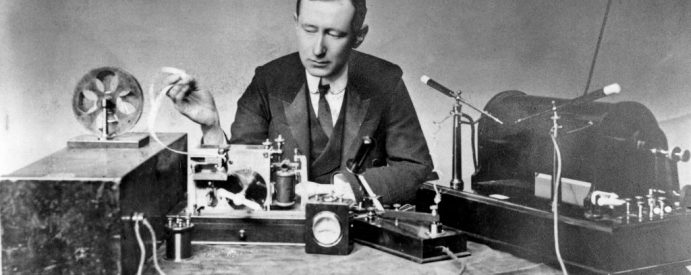Inclusivity: The role of diverse voiceover talent
Once upon a time, diverse voiceover talent was not a thing. Since the beginning of radio technology and all other recorded media that followed, the UK has been vastly accustomed to hearing British white male RP voices. TV and Radio presenters have largely been of that ilk and it’s only within the last 15 years have the recorded media industry been pushing and championing more diverse talent. The voiceover world is much further behind than the acting world and there’s a lot of catching up to do.

In the beginning…
When technology advanced and voiceover was born, people booking this kind of work were classically trained theatre actors. It was an elitist industry, as only wealthy people could afford to go to drama school. Therefore, they would have had clear and smooth RP (Received Pronunciation) voices and were more often than not, white.
As we live in a patriarchal society, this work mostly went to men and so anyone who did not fit this demographic, i.e. women, anyone with a regional or non-UK accent, or a person of colour (POC), may have been discouraged from thinking they could have a career in voiceover. This was the first voiceover “trend”.
In the 90s…
In the 90s, there was a shift in advertising towards inclusivity. While women were already used to promote domestic and feminine products, the ’90s saw an increase in the use of diverse accents in voiceover talent. It was observed that using a non-RP voice could be advantageous, as RP was considered to have an elitist sound. Using different accents made advertisements more relatable to a wider audience.
For example, using a northern accent to advertise deals at Asda would appeal to shoppers who could relate to that accent, while a cockney voice advertising deals at Wickes would be more relatable to people interested in DIY and on a budget.
Inclusive voiceover in terms of having a ‘non-RP accent’ became very popular. In line with this, more opportunities were opening up for working-class actors to attend drama schools on scholarships, so people from all demographics were being given the chance to undergo classical theatre training. Having a non-RP accent would be the next voiceover “trend”.

Covid switched things up
The voiceover industry was a bit of a closed shop until COVID-19. The majority of voiceover work would go to a small group of people. In my opinion, producers were either lazy when it came to casting or simply didn’t have enough diverse talent on their radar.
During the COVID-19 pandemic, the voiceover industry experienced a surge in demand. This led to a shortage of available talent, prompting producers to seek out new voices. Many individuals, including those who had never considered a voiceover career, began setting up home studios and pursuing opportunities in the industry. This shift also created opportunities for people of colour in the voiceover industry.
Since the 2010s, the TV and Film industry began to diversify. There became an increased demand for people of colour to feature more in the entertainment industry and to represent a more diverse Britain. For some actors of colour, this has increased the opportunities being offered to them and has kept them in constant work. Nowadays, a lot of voiceover artists solely do voiceover and nothing else, but in times past, voiceover was seen as something that actors did to earn money when the acting jobs weren’t coming through. So for a lot of POC, during COVID, when the acting work wasn’t coming through, they turned to voiceover.
Why is it important to cast diversely?
In today’s increasingly diverse world, it’s crucial to embrace and include all cultures and backgrounds in society to promote inclusivity and avoid marginalizing any groups of people. An important step in achieving this is through diverse representation in voiceover work.
By moving away from the traditional practice of exclusively hiring white RP-sounding voiceover artists, we can create opportunities for voiceover talent from all races and dialects. Instead of casting a white actor for an Indian character or accent, the industry can now tap into the talent pool of voiceover artists from Indian backgrounds. For instance, when producing an audiobook featuring a Hispanic main character, it’s ideal to hire a voice actor with a Hispanic heritage. This not only ensures authenticity in the accent but also attracts a wider audience to engage with the audiobook.
Being able to perform a variety of accents and character voices is a valuable skill for voiceover artists, especially for projects requiring multiple voices. This versatility saves costs for companies compared to hiring multiple actors for distinct roles. To ensure inclusivity in voiceover work, I recommend hiring someone whose natural speaking voice aligns with at least one of the characters or, for non-UK accents, someone with a connection to that specific region.
As for my own capabilities, my natural accent is London, and I’m also proficient in various UK and non-UK accents. You can find the full list of accents I can perform on the Portfolio page.
If you’re interested in hiring me for your project, please don’t hesitate to contact me or book a demo below.


